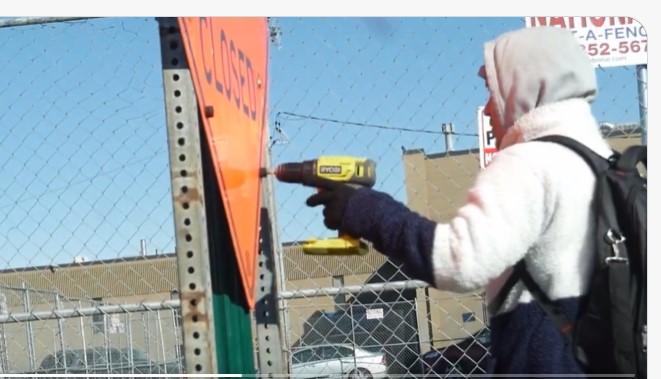Day-labor chaos on West Lake Street
Day laborers line up for blocks along West Lake Street in south Minneapolis looking for work.
Around 10 am this morning, two colleagues of mine visited this intersection just west of I-35W. They discovered dozens (more than 50) of young Hispanic men looking for paying work. Any work.
As you can see, some brought along their own electric drills, ready to go.

You usually think of markets as self-organizing: the “invisible hand” at work, ensuring that markets clear and that willing buyers meet up with willing sellers. The scene on Lake Street this morning was dystopian.
Reporter Maya Rao of the Minneapolis Star Tribune visited the site last month and published a story under this headline:
‘You have to be the fastest’: Migrants face tough competition for cash day jobs on one Minneapolis corner
Without work permits, the new arrivals hustle for work even as Minnesota’s official labor market faces a shortage.
Her piece reads sympathetically of everyone involved. She describes the workers as being mostly Ecuadorians, unable to obtain work permits as their asylum cases await adjudication in nearby Ft. Snelling.
Rao suggests that these workers are being exploited,
“They know we need a job and we’ll pretty much work for anything,” Manuel said in Spanish, his dark shoes and pants spattered with white paint.
In this market, neither buyers nor sellers are, strictly speaking, following the law. Rao mentions the unfilled positions in Minnesota, officially totaling some 168,000.
Both the day laborers above and another 100,000 or so undocumented workers in the state contribute to driving down wage rates at the bottom of the ladder, making work unattractive to many.
In Minnesota, the official unemployment rate is near historic lows (under 3 percent). But the labor force participation rate is also near historic lows. The state’s labor force, officially, has not recovered back to pre-Covid levels. Large numbers of Minnesota-born workers have simply checked out. Official statistics record more than 130,000 Minnesota workers missing since the June 2020 peak. We don’t have a shortage of local workers to fill open spots, we have a shortage of workers willing to participate at the current artificially low wages.
Scenes such as the one above will only worsen if Minnesota declares itself a “sanctuary” state, as has been proposed by Democrats in the state legislature.
Here at the Center, we are running a petition campaign to oppose the legislation (HF 2860 and HF 3459).